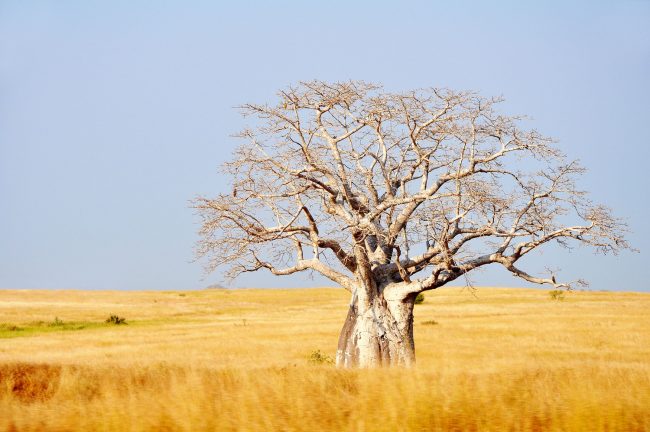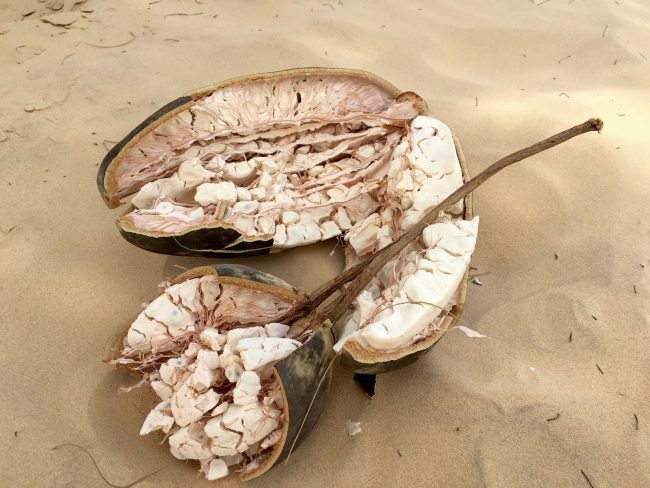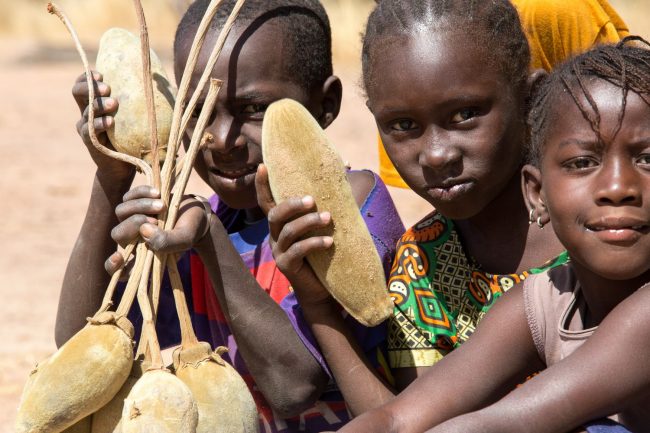Sub-Saharan Africa is known for its famous baobab tree. The baobab tree is known as the “Tree of Life,” and the “Upside-Down Tree.” The baobab tree is known as the “Tree of Life” due to its remarkable capacity to withstand harsh and arid heat. The rainy season in Senegal only lasts a few months – the tree collects water during this time, and is able to survive the rest of the year off of the reserve in its massive trunk. This massive tree is starting to shake up the food industry because of the superfood that the tree yields.
The baobab tree is an amazing source of food. Baobab fruits are consumed locally in a number of different ways. Once the hard shell is cracked, inside there is a grainy white pulp with seeds encrusted on the inside. In the markets, you can buy bags of this grainy pulp as a snack. It has the consistency of a marshmallow albeit chewier and slightly tangy. Bouye is a local juice made from the white pulp mixed with water and a bit of sugar. These are just some examples of how the superfood is consumed locally.
Recently, it has been discovered that this local baobab fruit actually has a tremendous benefit in terms of health and nutrition. Part of the magic of this fruit is that is automatically dehydrates itself: this means that the fruit must simply be ground in order to be consumed. No preservatives or additives are required. This gives this fruit an edge over other superfoods. People have been consuming baobab for centuries; as a way to treat malaria and fevers, and even for helping with gastrointestinal problems.
Baobab is universally acknowledged as a superfood and this fruit is slowly gaining momentum in the nutrition and health sector. Baobab has tremendous benefits when it is incorporated into your diet and research is unveiling more and more information about this fruit every year.
The perks of baobab are endless – it has the potential to prevent varicose veins and serve in heart disease prevention treatment. It has detoxifying properties which can aid in counteracting liver damage. Also rich in essential vitamins and nutrients – baobab holds ten times the amount of vitamin C contained in a single serving of oranges. Baobab is also high in Calcium, Potassium, and Magnesium. Full of antioxidants, it can stall wrinkles and aging due to its ability to offset free radical formation. This sugar-free fruit is ideal for adding to granola bars and cereals as well. The raw powder, sold in health food stores, can be easily mixed into your smoothie or juice to add an extra kick of energy and nutrition.
Next time you are at the store, keep your eyes peeled for baobab products – whether it is baobab powder or food bars with baobab in it. Maybe you will be inspired to discover this exotic new superfood – direct from Africa to your grocery store.
Photo Credits
Baobab tree – AdobeStock Images
All other images from Baobab Fruit Company Senegal
Guest Author Bio
Rebecca Hughes
 Rebecca Hughes is based in Dakar, Senegal. She has worked in international schools and is currently working in marketing and communications. In her spare time, Rebecca manages an ethical accessory company called Six Bougies, sourcing textiles from across West Africa and working with local artisans to create globally-inspired products.
Rebecca Hughes is based in Dakar, Senegal. She has worked in international schools and is currently working in marketing and communications. In her spare time, Rebecca manages an ethical accessory company called Six Bougies, sourcing textiles from across West Africa and working with local artisans to create globally-inspired products.
Recent Guest Author Articles:
- How Strong Business Training Translates Into Everyday Decision-Making
- New Career and Degree Paths for Educators Who Want to Make a Broader Impact
- Finding the Right Plumber in Portland: A Comprehensive Guide for Homeowners
- Why Choose Elara Caring for Jackson, MI Home Health Services?
- How I Turned Poetry into a Paycheck





I didn’t know that baobab trees had fruit on them. I heard that some African food stores will sell it only for you to try. That would be nice just because they are kind of hard to get if you don’t live in Africa.